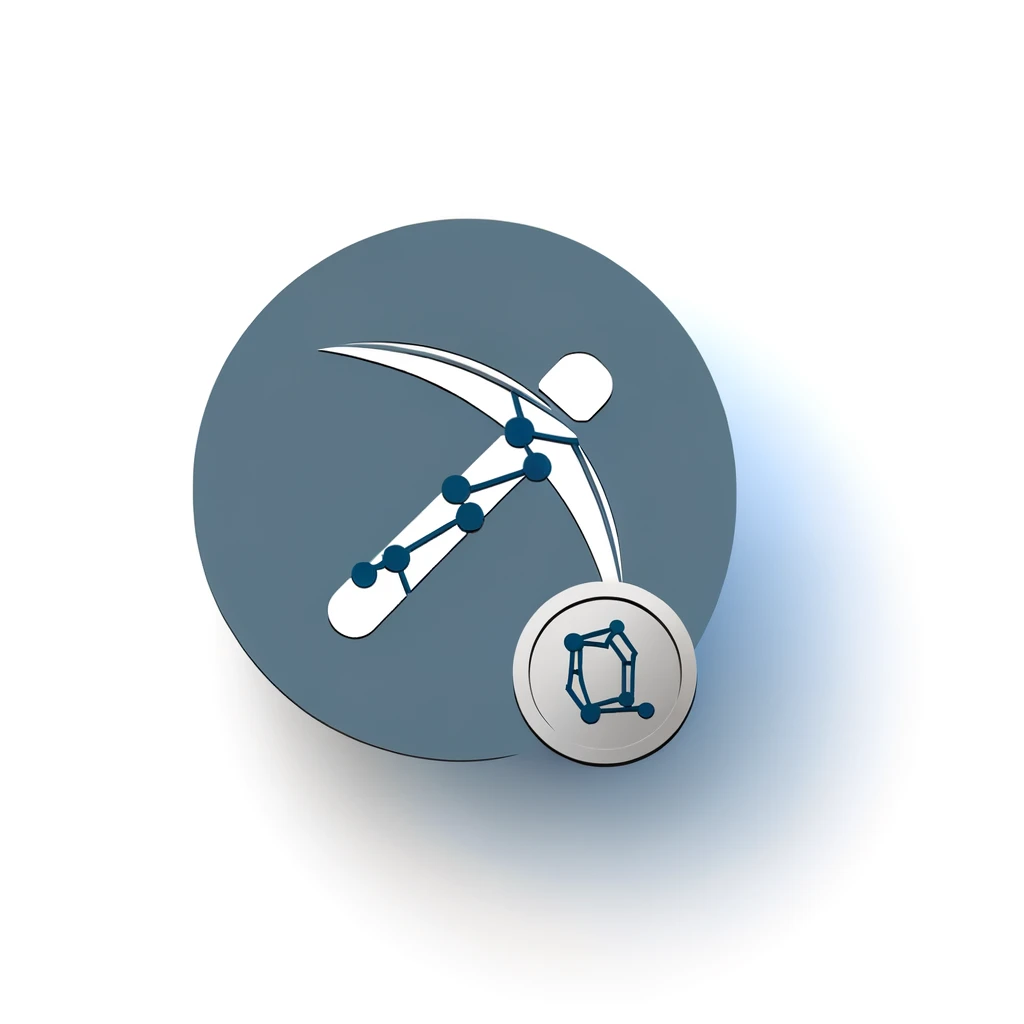Table of Contents:
Introduction
Understanding the Ravencoin mining difficulty is crucial for anyone looking to venture into mining this cryptocurrency. This article aims to break down the concept, making it accessible even for beginners. By the end of this guide, you will have a clear understanding of how mining difficulty works, what factors influence it, and how you can adapt your mining strategy to stay profitable. Let's dive in and explore the intricacies of Ravencoin mining difficulty.
What is Ravencoin Mining Difficulty?
Ravencoin mining difficulty refers to how hard it is to find a new block in the Ravencoin blockchain. This difficulty level adjusts automatically to ensure that blocks are mined at a consistent rate, roughly every minute. When more miners join the network, the difficulty increases to maintain this balance. Conversely, if miners leave, the difficulty decreases.
Get $500 free Bitcoin mining for a free testing phase:
- Real daily rewards
- 1 full month of testing
- No strings attached
If you choose to buy after testing, you can keep your mining rewards and receive up to 20% bonus on top.
The difficulty is a crucial part of the Ravencoin protocol. It ensures the network remains secure and stable. By adjusting the difficulty, the network can adapt to changes in the total computational power (hashrate) contributed by miners. This automatic adjustment helps prevent sudden spikes or drops in block creation times.
In essence, the mining difficulty is a dynamic measure that keeps the Ravencoin network running smoothly, regardless of how many miners are active at any given time.
How is Ravencoin Mining Difficulty Measured?
The Ravencoin mining difficulty is measured using a formula that takes into account the total computational power, or hashrate, of the network. This formula adjusts the difficulty level to ensure that new blocks are found approximately every minute. The key elements in measuring mining difficulty include:
- Hashrate: The total computational power contributed by all miners in the network.
- Target Time: The desired time interval for finding a new block, which is about one minute for Ravencoin.
- Current Difficulty: The existing difficulty level that needs to be adjusted based on changes in the hashrate.
The adjustment process involves comparing the actual time taken to find recent blocks with the target time. If blocks are being found too quickly, the difficulty increases. If they are being found too slowly, the difficulty decreases. This ensures that the block time remains consistent.
The formula for adjusting difficulty can be simplified as:
New Difficulty = Old Difficulty · (Actual Time / Target Time)
This dynamic adjustment mechanism helps maintain the stability and security of the Ravencoin network, making it resilient to fluctuations in mining activity.
Current Ravencoin Mining Difficulty Levels
As of now, the Ravencoin mining difficulty stands at 85.31 K with a block height of 3,432,273. Over the past 24 hours, the difficulty has increased by 1.63%. This shows a slight uptick in the computational power being used to mine Ravencoin.
In the last week, the difficulty level has remained relatively stable with a 0.00% change. However, over the past 30 days, there has been a 7.50% increase, indicating a gradual rise in mining activity. Interestingly, in the last 90 days, the difficulty has decreased by -18.86%, reflecting a more significant fluctuation in the network's hashrate.
These changes in difficulty levels highlight the dynamic nature of the Ravencoin network. Miners need to stay updated with these shifts to optimize their mining strategies effectively. Below is a summary of the current difficulty levels:
- Current Difficulty: 85.31 K
- 24-Hour Change: +1.63%
- 7-Day Change: 0.00%
- 30-Day Change: +7.50%
- 90-Day Change: -18.86%
Understanding these trends can help miners make informed decisions about their mining operations and anticipate future changes in the network's difficulty.
Factors Affecting Ravencoin Mining Difficulty
Several factors influence the Ravencoin mining difficulty. Understanding these can help miners anticipate changes and adjust their strategies accordingly. Key factors include:
- Network Hashrate: The total computational power contributed by all miners. A higher hashrate generally leads to an increase in mining difficulty.
- Number of Miners: As more miners join the network, the competition to find new blocks increases, raising the difficulty.
- Mining Hardware: Advances in mining hardware, such as more efficient ASICs or GPUs, can boost the hashrate, impacting the difficulty.
- Block Reward Halving: Periodic reductions in the block reward can influence miner participation, indirectly affecting the difficulty.
- Market Price of Ravencoin: Higher prices can attract more miners, increasing the hashrate and, consequently, the difficulty.
- Energy Costs: Fluctuations in electricity prices can affect the profitability of mining, influencing the number of active miners.
These factors interact in complex ways, making the mining difficulty a dynamic and ever-changing metric. By staying informed about these influences, miners can better navigate the challenges of Ravencoin mining.
Impact of Difficulty Changes on Miners
Changes in Ravencoin mining difficulty have a direct impact on miners. These fluctuations can affect both the profitability and the operational strategies of mining activities. Here are some key impacts:
- Profitability: When the difficulty increases, it becomes harder to find new blocks. This means miners need more computational power and energy, which can reduce their profits. Conversely, a decrease in difficulty can make mining more profitable.
- Resource Allocation: Miners may need to invest in more efficient hardware or optimize their existing setups to cope with higher difficulty levels. This could involve upgrading to more powerful GPUs or ASICs.
- Operational Costs: Higher difficulty often leads to increased energy consumption. Miners must balance their electricity costs against potential earnings to ensure their operations remain viable.
- Mining Strategy: Changes in difficulty may prompt miners to switch between different cryptocurrencies. If Ravencoin becomes too difficult to mine profitably, miners might shift their focus to other coins with lower difficulty levels.
- Network Stability: Significant changes in difficulty can affect the overall stability of the Ravencoin network. A sudden increase might discourage some miners, leading to a drop in hashrate and potentially slower block times.
Understanding these impacts allows miners to adapt their strategies in response to difficulty changes. By staying flexible and informed, they can navigate the challenges and maintain profitable operations.
Tools to Track Ravencoin Mining Difficulty
Tracking Ravencoin mining difficulty is essential for miners to optimize their operations. Several tools and platforms provide real-time data and analytics to help miners stay updated. Here are some of the most popular tools:
- Mining Pools: Many mining pools offer dashboards that display current difficulty levels, hashrate, and other key metrics. Examples include Nanopool and 2Miners.
- Blockchain Explorers: Websites like Ravencoin Network and Blockchain.com provide detailed information about the Ravencoin blockchain, including difficulty levels and block times.
- Mining Software: Tools like minerstat® offer integrated features for tracking mining difficulty, optimizing hardware settings, and maximizing profits.
- Dedicated Websites: Platforms such as CoinWarz and WhatToMine provide comprehensive data on mining difficulty, profitability, and hardware performance.
- Mobile Apps: Apps like CoinMarketCap and Blockfolio offer mobile access to real-time mining data, making it easy to stay informed on the go.
These tools provide valuable insights into the current state of the Ravencoin network. By leveraging these resources, miners can make informed decisions and adjust their strategies to stay competitive.
Optimizing Your Mining Strategy in Response to Difficulty Changes
Adapting to changes in Ravencoin mining difficulty is crucial for maintaining profitability. Here are some strategies to optimize your mining operations in response to difficulty fluctuations:
- Monitor Difficulty Levels: Regularly check the current difficulty using the tools mentioned earlier. Staying informed allows you to make timely adjustments to your mining setup.
- Optimize Hardware: Ensure your mining hardware is running at peak efficiency. This may involve overclocking your GPUs or upgrading to more efficient ASICs. Tools like minerstat® can help with this.
- Adjust Mining Software: Use mining software that supports automatic algorithm switching. This feature allows your setup to mine the most profitable coin based on current difficulty levels and market prices.
- Join a Mining Pool: Pooling resources with other miners can help mitigate the impact of difficulty increases. Mining pools distribute rewards more consistently, making it easier to manage fluctuations in difficulty.
- Manage Energy Costs: Keep an eye on your electricity consumption. Implement energy-saving measures and consider mining during off-peak hours when electricity rates are lower.
- Diversify Mining Portfolio: Don't rely solely on Ravencoin. Diversify your mining activities by including other cryptocurrencies. This can help balance the risks associated with difficulty changes in any single network.
By implementing these strategies, you can better navigate the challenges posed by changing mining difficulty. Staying flexible and proactive will help you maintain a profitable mining operation, even as the network evolves.
Conclusion
Understanding and adapting to Ravencoin mining difficulty is essential for any miner aiming to stay profitable. The difficulty level is a dynamic metric that adjusts based on the network's hashrate, ensuring consistent block times. By keeping track of current difficulty levels and understanding the factors that influence these changes, miners can make informed decisions about their operations.
Utilizing tools to monitor difficulty, optimizing hardware and software, and employing strategic approaches like joining mining pools or diversifying your mining portfolio can help mitigate the impacts of difficulty fluctuations. Staying proactive and flexible in your mining strategy will enable you to navigate the challenges and continue to mine Ravencoin effectively.
In conclusion, while mining difficulty presents challenges, it also offers opportunities for those who are well-prepared and informed. By leveraging the insights and strategies discussed in this article, you can optimize your mining efforts and maintain a competitive edge in the ever-evolving world of Ravencoin mining.
Navigating Challenges in Ravencoin Mining
What is Ravencoin Mining Difficulty?
Ravencoin mining difficulty refers to how hard it is to find a new block in the Ravencoin blockchain. This difficulty level adjusts automatically to ensure that blocks are mined at a consistent rate, roughly every minute.
How is Ravencoin Mining Difficulty Measured?
Ravencoin mining difficulty is measured using a formula that takes into account the network's total computational power. The difficulty level adjusts to maintain a consistent block time of roughly one minute.
What Factors Affect Ravencoin Mining Difficulty?
Several factors influence Ravencoin mining difficulty, including the network hashrate, the number of miners, advances in mining hardware, block reward halving, market price of Ravencoin, and energy costs.
How do Difficulty Changes Impact Miners?
Difficulty changes affect miners by impacting profitability, resource allocation, operational costs, and mining strategy. Understanding these impacts helps miners adapt and remain profitable.
What Tools Can Help Track Ravencoin Mining Difficulty?
Several tools and platforms provide real-time data and analytics on Ravencoin mining difficulty, including mining pools, blockchain explorers, mining software, dedicated websites, and mobile apps.






